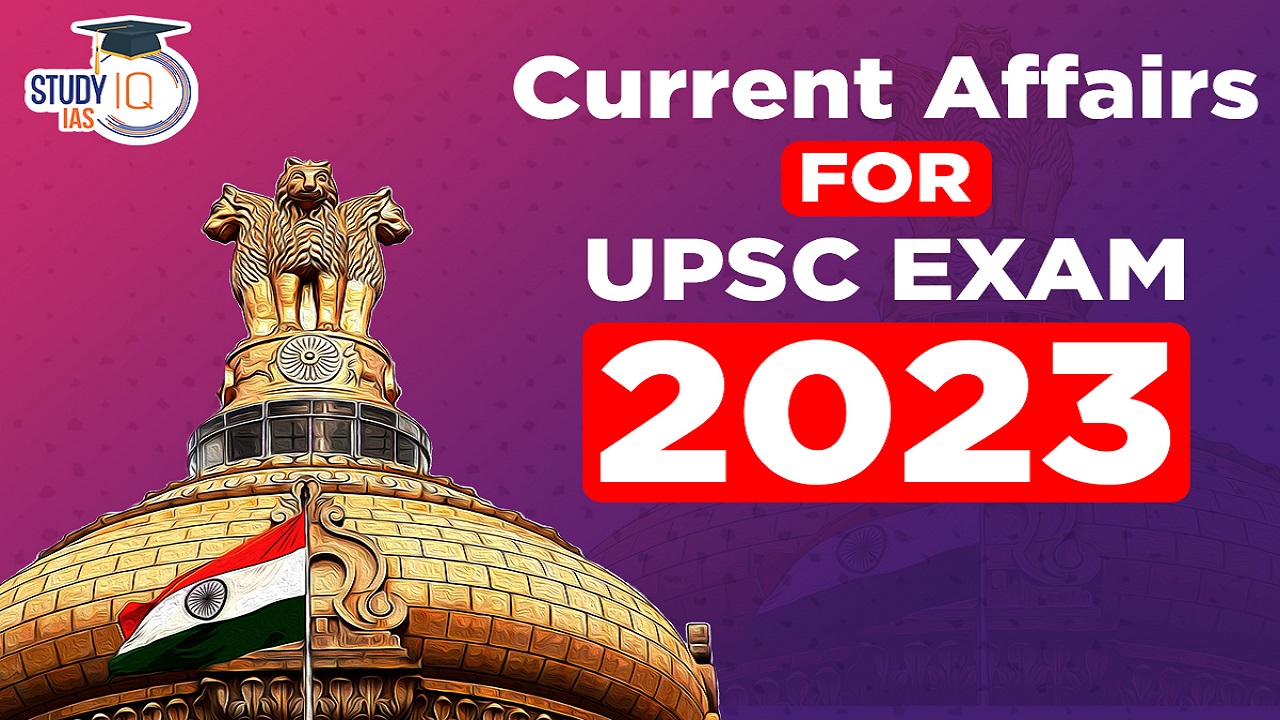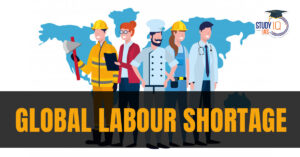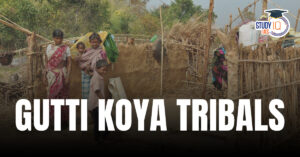Current Affairs 24th July 2023 for UPSC Prelims Exam
Adjournment Motion
Context: A group of MPs have moved a motion of Adjournment of the business in Lok Sabha to discuss over the ongoing Manipur violence.
About Adjournment Motion
- Adjournment motion is introduced only in the Lok Sabha to draw the attention of the House to a definite matter of urgent public importance.
- It is a form of censure of the government, therefore Rajya Sabha is not permitted to make use of this device
- It is regarded as an extraordinary device because it interrupts the normal business of the House.
- Adjournment motion needs the support of 50 members to be admitted.
- The discussion on this motion should last for not less than two hours and thirty minutes.
- Authority: The Speaker has to decide whether to allow the motion. It results in the House dropping its scheduled list of business to discuss this urgent matter.
- Origin: It originated in the House of Commons in the United Kingdom, and started its journey in India under the rules of the pre-independent bicameral legislature established under the Government of India Act of 1919.
- The central assembly and legislative council members could move the adjournment motion in their Houses.
- Presiding officers of these Houses allowed adjournment motions because members did not have other procedural devices for raising urgent matters.
- And since the British administration was not under the legislature’s control, it was one of the few procedural measures for members to express their concerns over a particular serious matter.
- Restrictions: The right to move a motion for an adjournment of the business of the House is subject to the following restrictions. i.e., It should:
- Raise a matter which is definite, factual, urgent and of public importance.
- Not cover more than one matter.
- Be restricted to a specific matter of recent occurrence.
- Not raise a question of privilege.
- Not revive discussion on a matter that has been discussed in the same session.
- Not deal with any matter that is under adjudication of court.
- Not raise any question that can be raised on a distinct motion.
Other Important Parliamentary Motions
| Privilege motion |
|
| Censure motion |
|
| Call attention motion |
|
| No Day Yet Named motion |
|
| Cut motions |
|
| No Confidence motion |
|
| Confidence motion |
|
Current Affairs 22nd July 2023 for UPSC Prelims Exam
The Protein Folding Problem
Context: Recently, Google’s DeepMind released the structure of 200 million proteins and called it to be the most important achievement of AI ever, namely a ‘solution’ to the protein-folding problem.
What is Protein-folding Problem?
- Definition: Proteins are composed of a linear chain of amino acids and their 3D structures determine their functions.
- Problem: Structure determination of proteins is problematic.
- One way to know the optimal folded structure of the protein computationally is to sample all its possible configurations, composed of specific angles between peptide bonds.
- However, this is an impossible task as a typical protein may have about 10,300 configurations and even if a million of them were examined per second, the overall time needed will be unimaginable.
- DeepMind’s AlphaFold: DeepMind’s AlphaFold made an important breakthrough in 2020.
- It accurately predicted the structures of about 100 proteins to atomic resolution, and no other solution came close to this. Many people believe that the protein-folding problem is over.
- DeepMind also decided to place the research outcomes i.e source code, structures of unknown proteins, easily accessible so more discoveries can happen.
- Benefits: This discovery has benefitted the Drugs for Neglected Diseases initiative (DNDi) in addressing deadly Chagas disease and Leishmaniasis.
- Since drug discovery has become faster due to AlphaFold, new drugs for rare diseases, which are of little commercial interest to pharma companies, have become possible.
- Thousands of molecules or processes may be screened for specific functions rapidly. Robots will characterise them to ‘discover’ an optimised strategy, directed by non-human ‘agents’. This could change chemistry.
- The UNEP’s World Environment Situation Room (WESR) collects and analyses, using AI, real-time sensor data from thousands of sensors spread over 140 countries to predict carbon dioxide concentration, glacier mass, sea level rise, biodiversity loss, etc.
- Large Language Models that built the likes of ChatGPT can create excellent text, music, and art. But they are not yet good at writing complicated chemical equations or new mathematical formulae to explain phenomena.
- Risks:
- Scientists warn that AI products must be used with caution. Tools such as ChatGPT can assist in literature search but cannot provide deep analysis and may miss profound insights central to articles.
- Intrinsic biases of scientific enterprise can under-represent minority views and could lose original thoughts, due to poor citations.
- As compiling information and presenting them coherently by AI is easy, new paper factories may increase. AI-modified figures and images can produce a problem of ‘data’, making a nightmare for publishers.
- AI helps in the democratisation of knowledge. But ‘knowledge-to-things’ transformation will need infrastructure and resources.
Standing Committee on Statistics (SCoS)
Context: The Ministry of Statistics and Programme Implementation has formed a new Standing Committee on Statistics (SCoS) to advise on official data generated by the National Statistical Office (NSO).
About Standing Committee on Statistics (SCoS)
- Definition: The SCoS will provide a new internal oversight mechanism for official data, revamping a SCES set up in 2019.
- Composition: This panel is chaired by former National Statistical Commission chief and India’s first Chief Statistician Pronab Sen.
- He is accompanied by seven academics, including former Institute of Economic Growth professor Biswanath Goldar, National Council for Applied Economic Research professor Sonalde Desai, and Mausami Bose, professor at the Indian Statistical Institute.
- Function: The SCoS has “enhanced terms of reference” that enable it to advise the Ministry on all existing surveys and data sets.
- SCoS’ agenda is to explore the availability of administrative statistics that can be useful for surveys and generating more data.
- Identify areas where data gaps exist, suggest ways to fill them and carry out pilot surveys and studies to finetune new approaches for capturing better data.
- It will address issues raised “from time to time” on the results and methodology of surveys.
- With survey design and features evolving, the panel can seek to sensitise data users about the nuances involved to ensure better interpretation of the numbers.
- The SCoS will help the NSO finalise survey results that shall rebuild the credibility of India’s statistics.
- Need:
- In recent years, the credibility of some of NSO’s data, especially the results of various household surveys traditionally carried out by the National Sample Survey Office (NSSO) have come under suspicion, with even top government officials questioning their approach and outcomes.
- In 2019, the government had decided to discarded the results of two major NSSO household surveys carried out in 2017-18 — to assess the employment and consumption expenditure levels in Indian households — by claiming they suffered from “data quality issues”.
- However, after the 2017-18 Surveys were discarded, a fresh Household Consumption Expenditure Survey (HCES) was started in July 2022 and its results may take at least another year to be finalised.
- In the absence of this data, India’s key economic indicators such as retail inflation, GDP or even the extent of poverty, usually revised based on evolving consumption trends, continue to be based on the 2011-12 numbers, and lack contemporary ground realities.
- It compels the government to rely on proxy data such as Employees’ Provident Fund (EPF) account numbers to gauge employment trends and the National Family Health Survey to assess poverty levels.
Drug-resistant Tuberculosis (DR-TB)
Context: Bedaquiline has now become fundamental in curing drug-resistant tuberculosis (DR-TB).
More on News
- A major barrier for drug resistant TB care has ended as Johnson & Johnson’s patent on bedaquiline expired on July 18, 2022.
- J&J had filed secondary patents over bedaquiline till 2027, which were granted in 66 low-and middle-income countries. It includes 34 countries with high burden of TB, multidrug-resistant TB (MDR-TB), and TB/HIV.
- In India, a ‘pre-grant opposition’ was filed by a patient group and two TB survivors. As a result of their legal challenge, in a landmark decision before World TB Day, the Indian Patent Office rejected the U.S. corporation J&J’s secondary patent.
- Indian manufacturers will now be able to supply affordable, quality assured generic versions of bedaquiline in India as the primary patent expired on July 18.
What is Drug-Resistant TB?
- Tuberculosis: TB is a bacterial infection of the bacterium Mycobacterium tuberculosis in the lungs, but often in other organs as well.
- It can be treated by strictly adhering to the doses and frequencies of drugs prescribed by a physician.
- Multidrug-Resistant TB: (MDR TB) is caused by an organism that is resistant to at least isoniazid and rifampin, the two most potent TB drugs. These drugs are used to treat all persons with TB disease.
- A peer-reviewed 2020 study reported that TB becomes isoniazid-resistant when a person doesn’t fully adhere to the treatment regimen whereas rifampicin-resistance emerges due to other factors.
- Extensively Drug Resistant TB: (XDR TB) is a rare type of MDR TB that is resistant to isoniazid and rifampin, plus any fluoroquinolone and at least one of three injectable second-line drugs (i.e., amikacin, kanamycin, or capreomycin).
- Because XDR TB is resistant to the most potent TB drugs, patients are left with treatment options that are much less effective.
- Cases in India: India has the largest population (Nearly 2.8 million patients) of people living with drug-resistant TB.
- Treatment of MDR-TB: Drug-resistant TB is harder to treat. One important option for those diagnosed with pulmonary MDR TB is bedaquiline.
Smart Cities Mission
Context: The Government has pushed the deadline of its Smart Cities Mission to June 2023.
More on News
- The cities have been asked by the Government to implement the “labelling strategy” by August 31, 2022.
- It laid out options for using bespoke logos as well as common imagery such as the Mission logo.
- Stickers, boards, signage and other such material were also designed for installation on completed projects, including smart roads, lights, preserved heritage sites, etc.
- Labelling exercise was a method for creating awareness and providing information to the stakeholders of the projects.
- In Udaipur, visitors are given additional information through a QR code that leads to a city app developed under the Mission.
About Smart Cities Mission
- Definition: The Smart Cities Mission is an initiative of the Union Housing and Urban Affairs Ministry.
- It was launched on June 25, 2015.
- Cities across the country were asked to submit proposals for projects to improve municipal services and to make their jurisdictions more liveable.
- Between January 2016 and June 2018 (when the last city, Shillong, was chosen), the Ministry selected 100 cities for the Mission over five rounds.
- The projects were supposed to be completed within five years of the selection of the city.
- Objective:
- The main objective of the Mission is to promote cities that provide core infrastructure, clean and sustainable environment and give a decent quality of life to their citizens through the application of ‘smart solutions’.
- The Mission aims to drive economic growth and improve quality of life through comprehensive work on social, economic, physical and institutional pillars of the city.
- Funding:
- The Mission is operated as a Centrally Sponsored Scheme.
- Central Government will give financial support to the extent of Rs. 48,000 crores over 5 years i.e., on an average Rs.100 crore per city per year.
- An equal amount on a matching basis is to be provided by the State/ULB.
- Additional resources are to be raised through convergence, from ULBs’ own funds, grants under Finance Commission, innovative finance mechanisms such as Municipal Bonds, other government programs and borrowings.
- Smart City Advisory Forum (SCAF): Under the Mission, a Smart City Advisory Forum (SCAF) is established at the city level to advise and enable collaboration among various stakeholders. It consists of:
- Member(s) of Parliament
- Member(s) of Legislative Assembly
- Mayor, District Collector,
- Local youth, technical experts, other stakeholders, etc.
- All 100 Smart Cities have established their SCAFs.
- Status of the Projects under the Mission: According to data provided by the Union Housing and Urban Affairs Ministry to the Lok Sabha on July 20, 74% of the nearly 8,000 projects for which work orders have been issued, have been completed.


 Sanitary Waste Management Model of Karad...
Sanitary Waste Management Model of Karad...
 Global Labour Shortage and Opportunities...
Global Labour Shortage and Opportunities...
 Gutti Koya Tribals in Post-Conflict Indi...
Gutti Koya Tribals in Post-Conflict Indi...





















